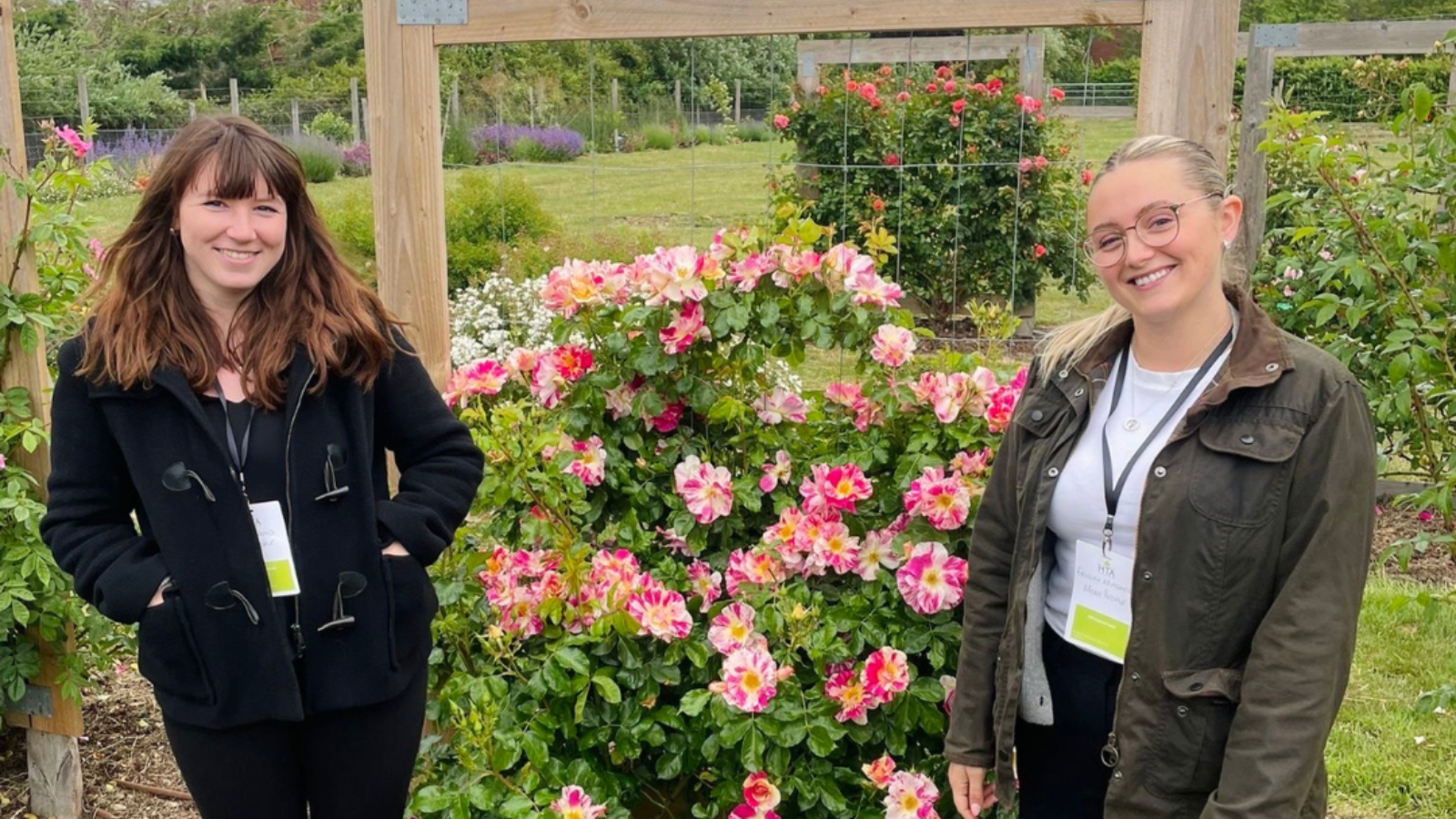
Roses, Reimagined: A Look Inside the Rochfords International Rose Trials
On Tuesday 3rd June, Felicity and I had the pleasure of attending the Rochfords International Rose Trials as part of a HTA Members Regional Event – and we left with a renewed appreciation for both the complexity of rose breeding and the quiet innovation happening behind the scenes of UK horticulture.
RIRT is the only independent site in the UK where unnamed seedling roses — varieties not yet commercially available — are trialled on behalf of breeders from around the world. Judged over two years using WFRS (World Federation of Rose Societies) standards, it’s a rare opportunity to see the future of the rose market taking shape, long before these plants reach garden centres.
The trials form part of Rochford's broader CSR commitment. In addition to supporting breeders and growers, the initiative places a strong emphasis on education and outreach, engaging schools, colleges and horticultural societies to help promote horticulture to a wider and younger audience.
A Unique Space in the Market
The day began with a welcome and introduction from the HTA, followed by a tour through the trial beds. It was such a valuable chance to witness how innovation and product development are unfolding at the breeder level. These are the formative stages of varieties that could become bestsellers — or never even make it past this field.
One particularly exciting development from our visit was the announcement of RIRT’s collaboration with the RHS, which will allow top-performing roses from the trials to be considered for the Award of Garden Merit. For breeders, this could be the bridge they need between trial success and commercial recognition. Also announced during our visit was the launch of the Peter Seabrook Award for Novelty in Rose Breeding. The award, in memory of the late journalist and plant trial advocate, will be judged by Kerry French and Robert Wharton, with the first winner to be named in 2025!
Industry Questions with No Easy Answers
During the Q&A session, much of the discussion focused on the public perception of roses. A key question emerged: Should we be encouraging consumers to view roses as part of a mixed border, rather than relegating them to traditional rose beds?
This led to a broader debate around responsibility. Should garden centres be rethinking how roses are displayed and marketed? Or should breeders and growers be doing more to simplify care instructions and ensure varieties are accessible to less experienced gardeners?
While no clear consensus was reached during our Q&A, it was really great to hear this kind of dialogue taking place. The fact that the issue remains unresolved highlights the complexities of connecting plant development, marketing, and consumer behaviour — a challenge familiar to many of the people working in the horticultural supply chain.
Observations from the Field
One of our favourite aspects of the day was the opportunity to cast a vote alongside other HTA members. We assessed fragrance and overall appeal — it became clear that Felicity and I have very different taste in roses, while she opted for a much more classic silhouette, I love the simpler plants with smaller, less elaborate flowers.
For those of us working on the people side of horticulture, it was a reminder of just how many disciplines contribute to getting a new plant to market — and how many conversations are still being had around innovation, accessibility and consumer engagement.
RIRT may be a quiet player in the public eye, but its role in shaping the future of rose breeding in the UK is significant. With a focus on both quality and inclusivity, it offers a model for how public opinion around growing roses can evolve, not just for experts, but for the next generation of gardeners and growers.
As the trials progress, it will be interesting to see how many of these currently unnamed seedlings actually find a place in the wider market — and what kind of support, branding and education they’ll need to thrive once they do.
